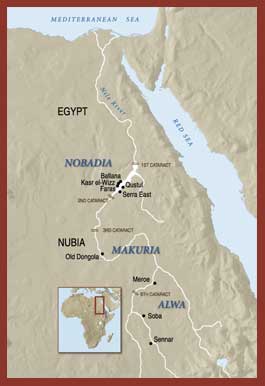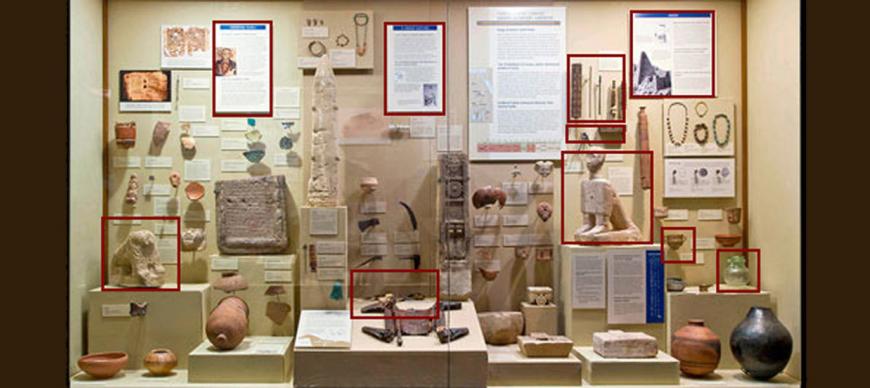Kings at Meroe ruled Nubia
Meroe, between the 5th and 6th cataracts of the Nile, had become the new capital of the Kushite state by about 270 BC. During the Meroitic period, Kushite culture showed less Egyptian influence and increasingly displayed a Nubian character, including the worship of new local deities and the creation of a Meroitic alphabet. The rule of Meroe’s kings extended hundreds of miles to the north, and most of northern Nubia between the 1st and 2nd cataracts became a Meroitic province. The Meroitic artifacts in this exhibit came from Oriental Institute excavations in northern Nubia.
The Noubadians (X-Group culture) dominated northern Nubia

New powers appeared in northern Nubia after the collapse of Meroe around 300 AD. The people known to the classical world as Blemmyes, formidable descendants of the ancient Medjay, moved into the area south of Aswan where they built a temple near Kalabsha. After a long struggle, they were conquered by the Noubadians who had entered northern Nubia from the south around 375 AD.Wealthy burials of the Noubadians at Qustul and Ballana included both human and animal sacrifices. The oldest known saddle in the world, shown here, came from one of their horse burials.
Medieval Nubia embraced Christian, then Muslim faiths
Missionaries from Byzantium converted Nubia to Christianity in the decades before 600 AD. Christian Nubia successfully resisted attacks by Arab armies following the Muslim conquest of Egypt in 641 AD and remained a Christian stronghold for several hundred years. Around 1200 AD, a combination of Muslim attacks and Arab immigration began to bring Islam to Nubia, and Muslim empires gained control of the region around 1500 AD. Today Islam is the religion and cultural foundation for most Nubians.



